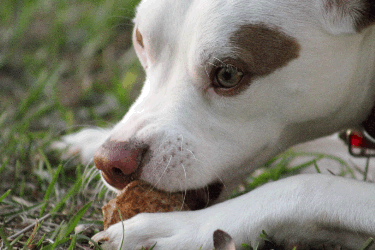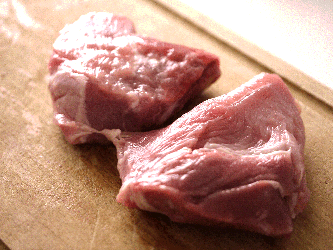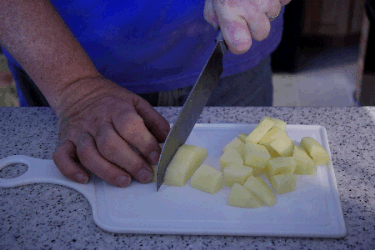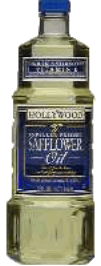|
LYMPHOMA: NUTRITIONAL THERAPY BEYOND DRUGS

|
After a diagnosis of cancer has been confirmed, many pet owners seek nutritional advice in an effort to address the disease from another angle. The fact is that no supplement or dietary approach is going to kill tumor cells directly; there is no secret super nutrient with cancer-killing properties. Instead, the goals of nutrition for the cancer patient focus on preserving body condition: maintaining a good appetite, maintaining a healthy body weight and maintaining muscle mass.
Beyond this, people wonder if there is a nutritional strategy that might put a tumor at a disadvantage: Not a cancer-killing super-nutrient per se but more of a general program that might create an edge over a regular commercial pet food. Several theories have emerged on how this might be done but, unfortunately, a lot of scientific evidence has not followed.
|
 (Photocredit: Morguefile.com) (Photocredit: Morguefile.com) |
Here are commonly employed strategies:
- Low Carbohydrate Diets
- Raw food
- Home Cooking
- High Levels of Omega 3 Fatty Acids
- Let's look at these more closely.
LOW CARB DIET:
Cancers tend to use anaerobic metabolism, in part because they do not have normal structure or blood vessel support and inadequate blood to a tissue means inadequate oxygen and inadequate oxygen means anaerobic metabolism. Anaerobic metabolism burns carbohydrates rather than fats. There are actually more complex reasons for tumors to go anaerobic beyond not having a proper blood supply but the fact is that tumors tend to want to burn carbohydrates while healthy tissues tend to want to burn fats. The theory of the "low-carb" diet is that fewer carbohydrates coming in, means less food for the tumor.
This theory is of some controversy but if one wishes to feed such a food, it is important to seek a food with <20% carbohydrates. Also, be aware that "grain-free" diets are usually not low in carbohydrates. Grain-free diets cater to the idea that some animals are not tolerant of grain proteins so these foods employ potatoes, yams or similar vegetables as carbohydrate sources. Recently grain-free diets have been implicated in heart disease development so it is best not to feed them unless there is a reason to do so (such as food allergy).
|
RAW FOOD
Raw foods have some advantages over cooked foods. They are frequently more palatable than cooked foods. Because they are uncooked, their proteins are unaltered by the cooking process and may be less allergenic. There is some argument that raw foods are more digestible than cooked foods because they more closely match the diet that an animal evolved to digest.
On the flip side of this, is bacterial contamination, a very real concern and a special risk for a cancer patient whose immune system is probably altered. There have been numerous studies showing pathogenic bacteria in raw foods (both home prepared and commercially obtained). The last thing a cancer patient needs is a bacterial intestinal infection so most experts recommend against raw foods especially for patients who have cancer.
|
 (Photocredit: Morguefile.com) (Photocredit: Morguefile.com) |
|
HOME COOKING
Home cooking can provide a highly palatable food for a patient with a sensitive appetite. The problem is that there is an abundance of recipes that turn out to be nutritionally incomplete when actually compared to the NRC (National Research Council) minimum requirements. Obviously, the cancer patient needs at least the same nutrition as a healthy patient.
Pet nutrition, especially when disease is involved, is not a do-it-yourself project where one assembles ingredients that seem whole and healthy and attempts to complete the diet with a multivitamin. If one is going to cook food for a pet, it is vital to have professional guidance beyond simply a web site that looks knowledgeable or a book that seems scholarly. A professional nutritionist should be consulted and this means a veterinarian who is a diplomate of the American College of Veterinary Nutrition.
Some helpful resources include: ACVN.org and BalanceIt.com
It is not clear if anything more can be achieved with a home cooked diet as opposed to a commercially prepared one but many people feel more comfortable making foods free of artificial preservatives or flavor enhancers. The main goal is to provide a palatable but still nutritionally complete food for the patient.
|
 (Photocredit: Morguefile.com) (Photocredit: Morguefile.com) |
OMEGA 3 FATTY ACIDS:
WHAT IS A FATTY ACID?
Biochemically, a fatty acid is what we colloquially call plain old “fat.” A fatty acid consists of a long carbon chain (say 20 or so carbons in length) with a biochemical acid group at one end. But there are different kinds of fat. Some fats are stored and burned as fuels and some fats actually form the structure of our cell membranes. It is these fatty acids that are recruited in the inflammatory cascade to be converted into prostaglandins and other inflammatory mediators. Omega 3 fatty acids are similarly recruited but do not convert to inflammatory mediators. Examples of Omega Three Fatty Acids (also called “n-3” fatty acids): Alpha linolenic acid "ALA"), Eicosopentanoic acid ("EPA"), docosahexanoic acid ("DHA").

Example of a fatty acid
For a more complete discussion on what makes a saturated fat, unsaturated fat, or an omega 3 fatty acid click here.
There is more evidence for omega 3 fatty acid having anti-cancer properties at high doses. The best source of DHA and EPA is cold water fish oils. Flax seed oil is a good source of ALA and is preferred by many people who want the benefits of an omega 3 fatty acid without the fishy taste. ALA, unfortunately, is not a very useful omega 3 fatty acids for dogs and cats so DHA and EPA are needed. Luckily, most pets like the fishy smell and taste.

This long molecule is DHA (Docosahexanoic acid).
It is one of the omega 3 fatty acids to look for on a label.
Note there is a double bond on the third carbon from the end.
The double bond in this location makes DHA an omega three fatty acid.
If the first double bond had been on the 6th carbon from the end,
that would make for an omega 6 fatty acid.
(original graphic by marvistavet.com)
Examples of Omega Three Fatty Acids (also called “n-3” fatty acids): Alpha linolenic acid, Eicosopentanoic acid, docosahexanoic acid.
An excellent source would be Cold Water Fish oils.
|
HILLS N/D DIET
Omega-3 fatty acids have been shown to inhibit the growth and spread of cancer plus they have anti-inflammatory properties. In the study that launched Hills N/d diet, 32 dogs with lymphoma were divided randomly into two groups: one that received a diet heavy in menhaden fish oil and one that received a diet heavy in soy bean oil. Both groups also received chemotherapy with doxorubicin. The dogs that received this omega 3 fatty acid diet went into remission sooner and stayed in remission longer than dogs that received the soy bean oil diet.
|

|
Both the “Low Carb” and Omega three fatty acid therapies have incorporated into Hills N/D diet which is available as a canned food and is available for dogs only.
SHOULD MY DOG USE THIS DIET?
This diet may be of tremendous benefit to a dog with lymphoma but there are a few caveats:
- This diet was tested on dogs who received BOTH dietary therapy AND chemotherapy. If you are planning to use this diet INSTEAD of chemotherapy, keep in mind that the effectiveness of this strategy remains untested.
- This diet is very expensive as food goes but, of course, very inexpensive as cancer therapy goes.
- This diet is frequently found unpalatable by dogs and the high fat levels tend to produce diarrhea. Remember that enjoyment of food is an important life quality parameter. If a dog eats N/d diet poorly and loses body condition due to poor appetite, it is probably best to use a different diet which is more palatable.
- Despite studies by Hills when the diet was first introduced, most oncologists have felt more proof of effect is needed before including it in standard therapy for lymphoma.
HOLLYWOOD BRAND SAFFLOWER OIL AND MYCOSIS FUNGOIDES
|
There is a particularly difficult form of T-cell lymphoma called "Mycosis Fungoides." It is a type of lymphoma that is limited to the skin and, like most T-cell forms of lymphoma, it is resistant to the usual lymphoma treatments. It seems there is some basis for the use one of the omega 6 fatty acids: linoleum acid.
There are two major brands of safflower oil on the market: Hain and Hollywood. Apparently Hollywood is the brand with the most linoleic acid and is the brand of choice in this somewhat controversial treatment. In one study using eight dogs with Mycosis fungoides (the skin T-cell form of lymphoma), six dogs achieved remission with no other therapy.
In 1999, at the annual American College of Veterinary Dermatology meeting, two case reports were presented: one dog out of remission for Mycosis fungoides after chemotherapy and the other having had no other therapy for Mycosis fungoides. The first dog had a partial response to the Safflower oil and the other achieved prolonged remission.
Minimal adverse effects come with the use of this oil (if too much oil is used there is a possibility of pancreatitis but, in general, obesity from the fat is the only problem). Safflower oil is inexpensive and readily available.
|

|


Page posted: 4/15/2021
Page last updated: 4/20/2023
|